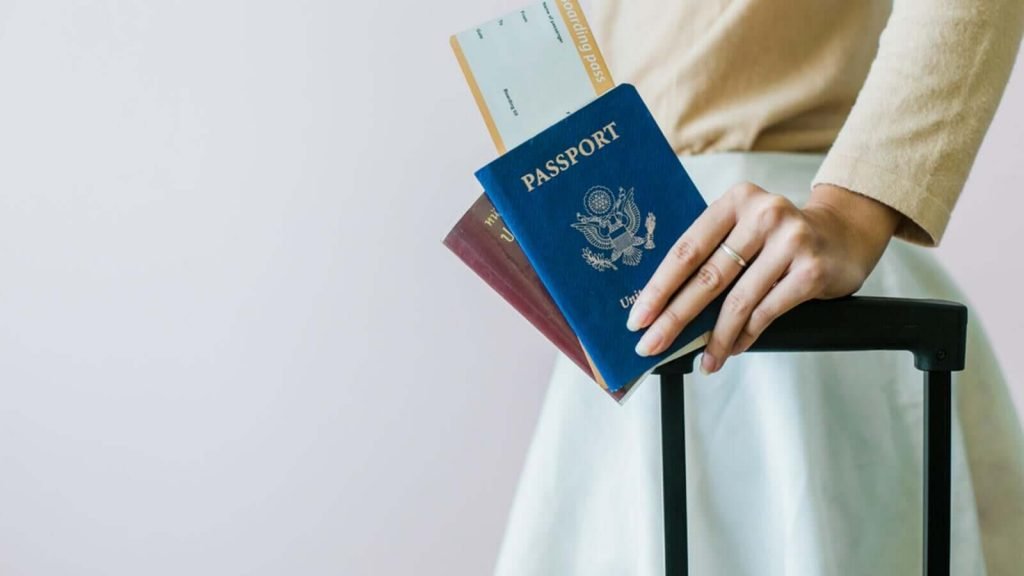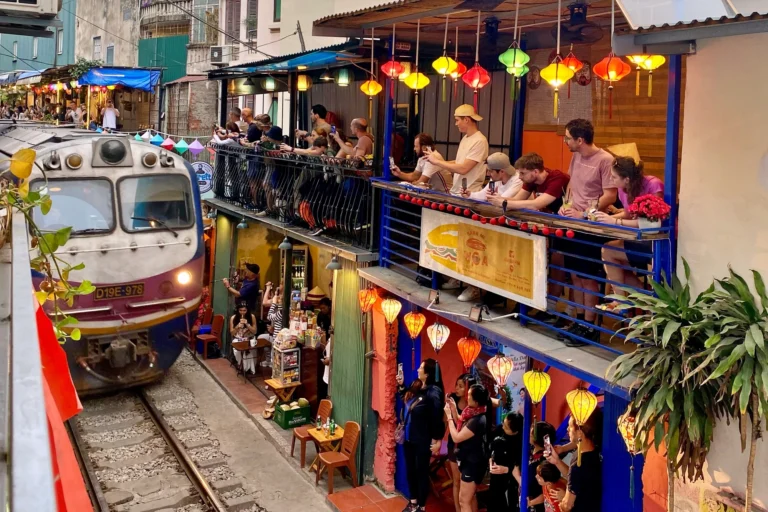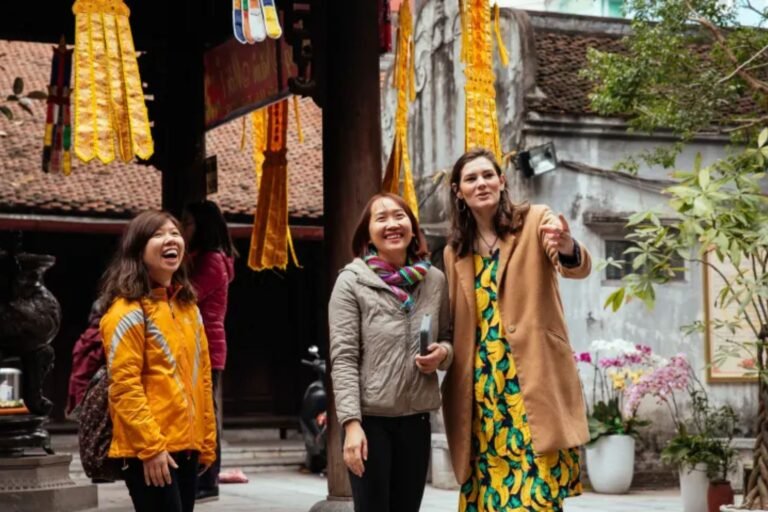Vietnam Visas: Everything You Need to Know
 Emma Nguyen
Emma Nguyen
All tourist destinations in Vietnam are open for travelers, and there is no mandatory self-isolation requirement upon arrival
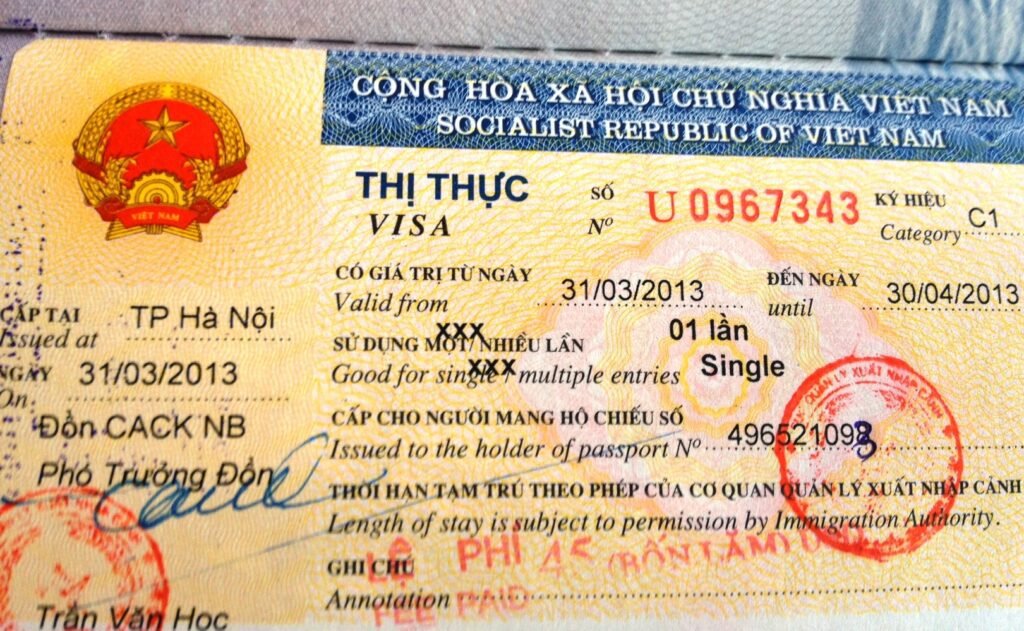
Here are the main highlights of the updated guidelines
Starting from March 15th, 2022, Vietnam has reinstated its pre-Covid-19 visa policy, including unilateral visa exemption, bilateral visa agreements, e-visa, and visa-on-arrival services, welcoming international visitors with open arms.
As of May 15th, 2022, international travelers are no longer obligated to present Covid-19 vaccination certificates, undergo Covid-19 testing, or adhere to quarantine requirements upon entry. The only mandatory condition is to have valid medical or travel insurance that covers Covid-19 treatment, ensuring a safe and worry-free journey
Vietnam Visa Exemptions
Discover the convenience of Vietnam’s visa exemptions, allowing visitors from select countries to enter without a visa and enjoy a specified number of days for their stay. The comprehensive list of countries with visa exemptions is provided below. For information on visa exemptions for diplomatic and other passports, kindly contact us
Should you wish to extend your stay beyond the designated duration, rest assured that you can easily apply for a visa extension upon your arrival in Vietnam.
E-Visa for Vietnam: Streamlining Your Travel Experience
Vietnam has embraced technological advancements to simplify its visa application process and welcome international travelers with open arms. The introduction of the Electronic Visa (E-Visa) system has revolutionized the way visitors obtain their visas, making it more convenient and efficient than ever before. In this article, we will delve into the details of the E-Visa for Vietnam and explore how it has enhanced the travel experience for tourists and business travelers alike.
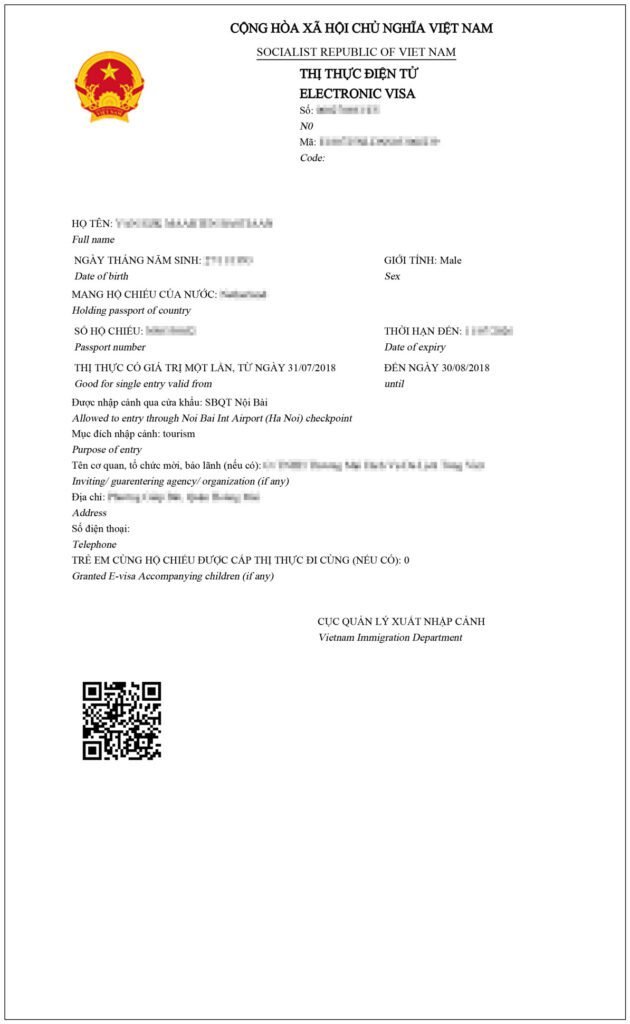
What is the E-Visa for Vietnam?
The E-Visa is an online visa application platform introduced by the Vietnamese government, allowing travelers from eligible countries to apply for a visa to enter Vietnam via a secure web portal. It is available for both tourist and business purposes, making it a popular choice for many international visitors seeking a hassle-free visa application process.
Advantages of E-Visa:
Convenience: With the E-Visa, travelers can apply for their visa from the comfort of their homes or offices, eliminating the need to visit an embassy or consulate in person.
Time-Saving: The application process for the E-Visa is typically faster, with processing times ranging from two to four business days, ensuring a quick turnaround for applicants.
Accessibility: The E-Visa system is accessible 24/7, allowing applicants to apply at any time that suits their schedule, making it ideal for those with busy lifestyles.
Simple Application Process: The online application form is user-friendly and straightforward, requiring applicants to provide essential personal and travel information, passport details, and a recent passport-sized photo.
Transparency: The E-Visa system provides clear guidelines and updates on the visa application status, keeping applicants informed throughout the process.
Newest update information about E-Visa for Vietnam
Commencing August 15, Vietnam will be offering e-visas to individuals from all nations and territories entering the country, as stated in a government resolution on Monday
Previously, Vietnam had exclusively provided 30-days single-entry e-visas to residents of 80 countries.
The recently introduced e-visa, facilitated by the Vietnam Immigration Department through the electronic transaction system, will now permit multiple entries within a 90-day validity period.
Thirteen airports that allow foreigners to enter and exit Vietnam by e-visa, include Noi Bai, Tan Son Nhat, Cam Ranh, Da Nang, Cat Bi, Can Tho, Phu Quoc, Phu Bai, Van Don, Tho Xuan, Dong Hoi, Phu Cat and Lien Khuong.
The 16 land border gates that allow e-visas are Tay Trang (Dien Bien Province), Mong Cai (Quang Ninh), Huu Nghi (Lang Son), Lao Cai, Na Meo (Thanh Hoa), Nam Can (Nghe An), Cau Treo (Ha Tinh), Cha Lo (Quang Binh), La Lay and Lao Bao (Quang Tri), Bo Y (Kon Tum), Moc Bai and Xa Mat (Tay Ninh), Tinh Bien and Vinh Xuong (An Giang) and Ha Tien (Kien Giang).
Thirteen sea border gates also allow e-visas: Hon Gai and Cam Pha (Quang Ninh), Hai Phong, Nghi Son (Thanh Hoa), Vung Ang (Ha Tinh), Chan May (Thua Thien Hue), Da Nang, Nha Trang (Khanh Hoa), Quy Nhon (Binh Dinh), Dung Quat (Quang Ngai), Vung Tau (Ba Ria Vung Tau), HCMC and Duong Dong (Kien Giang).
Countries that enjoy Vietnam’s visa exemption
Starting March 15, Vietnam reinstated its pre-Covid immigration regulations, offering visa exemption to citizens of 25 specific countries
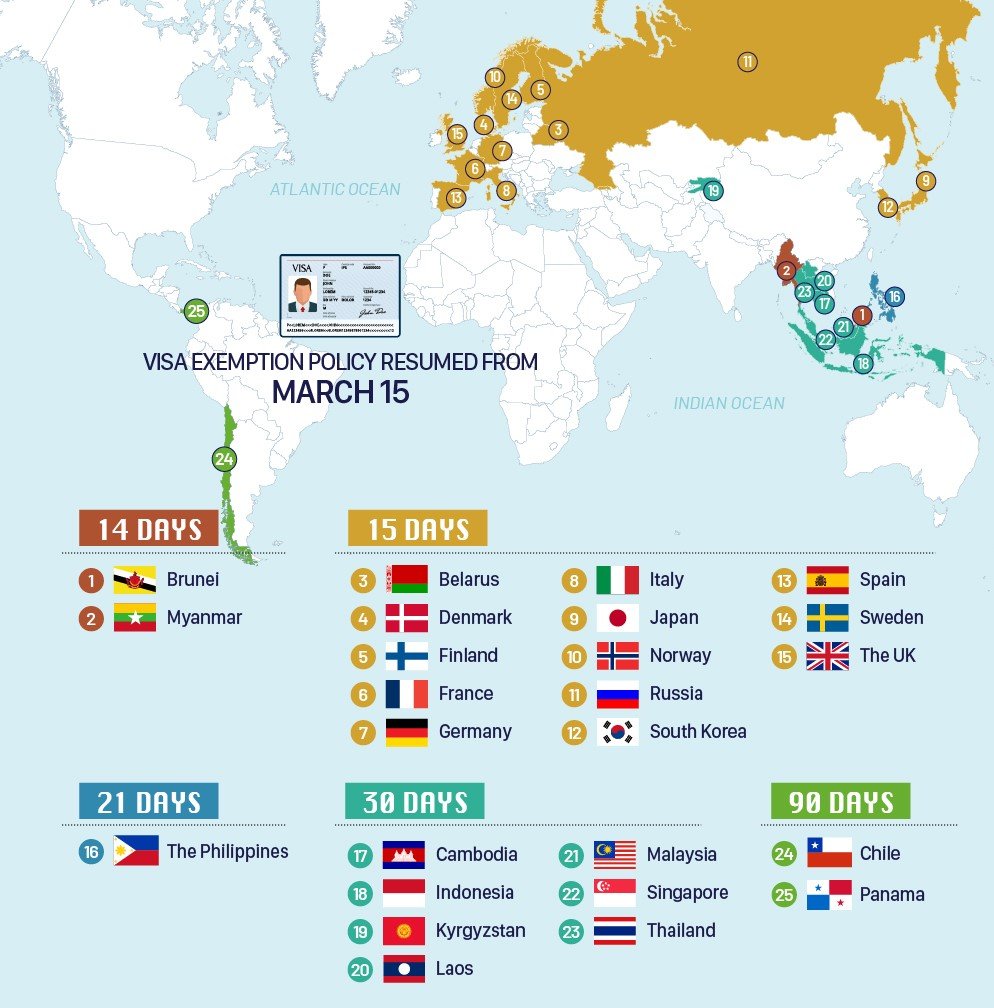
These countries are Germany, France, Italy, Spain, the U.K., Northern Ireland, Russia, Japan, South Korea, Denmark, Sweden, Norway, Finland and Belarus. Citizens of these countries are allowed to stay for 45 days from the time of entry, regardless of passport type and entry purpose.
The visa leniency, sanctioned by the National Assembly in June, seeks to promote tourism, investment, business collaborations, and scientific research
How to Apply for Vietnam’s e-Visa:
Step 1: Prepare the required materials:
- One 4×6 passport photo in .jpg format with a white background, without glasses.
- One photo in .jpg format of your passport data page.
- Passport valid for at least six months.
- Your temporary address in Vietnam and points of entry and exit.
- Debit or credit card for payment.
Step 2: Click https://evisa.xuatnhapcanh.gov.vn/web/guest/home and go to ‘E-visa Issuance’ then click on the link for ‘Outside Vietnam foreigners’.
Step 3: Upload your .jpg images (passport data page and passport photo) and fill out the required fields on the form completely. Submit your form.
Step 4: Pay the e-Visa fee of 25 USD. Copy down the document code provided.
Step 5: Within three working days you should receive news of your e-Visa application via email.
Step 6: Use your document code to locate your e-Visa online. Download and print the e-Visa in two copies for extra safety.
TIP: “Travellers with an e-Visa can go directly to immigration counters at their point of entry and do not need to queue at Visa on Arrival counters”
Click here to discover the best tours in Vietnam
Ask a question
Leave a Comment (0)
No questions yet. Be the first to ask a question!









